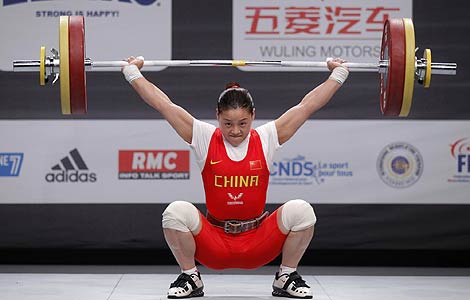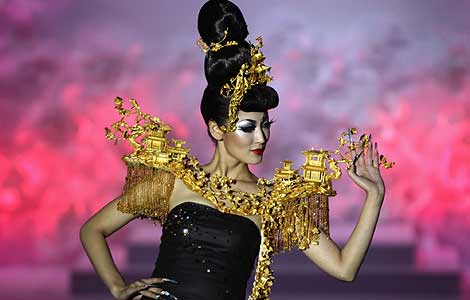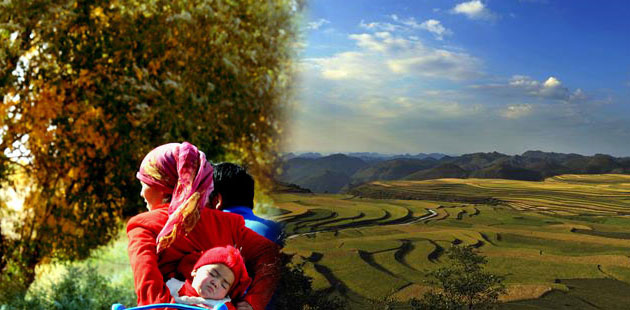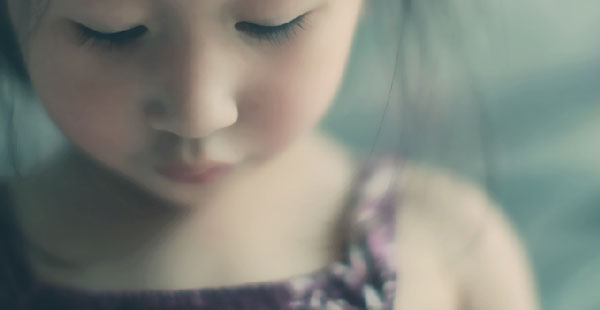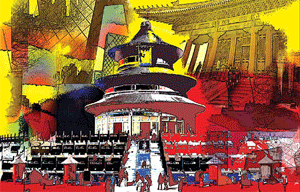Landscape power
Updated: 2011-11-04 11:48
By Brian Salter (China Daily European Weekly)
|
|||||||||
|
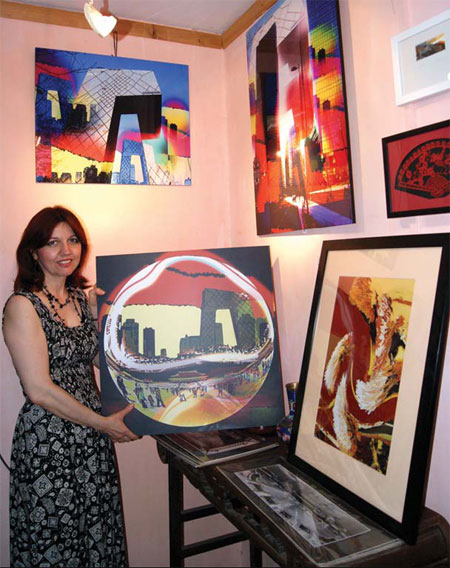 Agnes Nadkarni creates a montage of photographic extracts which are individually manipulated using special computer filters. The montage of the the Temple of Heaven (top) is a good example. [Brian Salter / for China Daily] |
"I was especially fascinated by the filters in Photoshop and at some of the effects that could be created so easily compared with traditional hand drawn methods; and this introduced me to a whole new vista of possibilities."
Her husband's next posting was to Dubai for three years and it was here that her international popularity started to take off. "Until then I had really been concentrating on doing portraits of people; but here I found a strong expatriate market with many wanting something to remember their time in the Middle East by.
There wasn't really a demand for portraiture. What people wanted was a record of some of Dubai's iconic buildings such as the Burj al Arab, together with camels and Arabs in traditional costume thrown in for good measure, she remembers.
"So in a way, it was almost by accident that I developed a technique that I call 'Photo-Design'", she says.
"I would start off taking photos of interesting architecture, and once back in my studio would look for similarities and contrasts between different pictures that I could then use to create a montage of photographic extracts which were individually manipulated using these special computer filters."
During an art fair in Abu Dhabi, she was approached by a company about using her work as the basis for postcards, wall posters and other decorations. "Until then you could buy virtually identical postcards across the Gulf all showing basically the same shots of the same buildings. Finally, they had something new they could sell."
Nearly two years ago, Nadkarni's husband was transferred yet again - but this time back to China. So the family set themselves up in Beijing where she took up the reins of her photo-design business once more and applied it to the Chinese market.
"In Beijing, everything is so different from the Middle East," she says. "In Dubai and Abu Dhabi people were always asking me for greetings cards and wall decorations. But here there is much less demand from individuals and more from companies wanting unique items for festivals such as Christmas and Chinese New Year to send to their clients.
"Again, I have noticed a difference in taste between what Europeans like and what is preferred by Asians. Westerners tend to like stronger colors and more modern themes," (one of Nadkarni's favorite buildings in Beijing is the new CCTV headquarters), "while the Chinese tend to prefer traditional scenes such as hutong areas, the Great Wall and palace complexes."
The artist admits that she still greatly misses Shanghai, which she describes as an exciting city full of life.
"But I also love Beijing in a totally different way. It is fascinating, full of history and beautiful buildings and I find it truly inspiring.
"I will stay in China for at least another two years; but I would like to think I will be here in Beijing for quite some time after that!"


